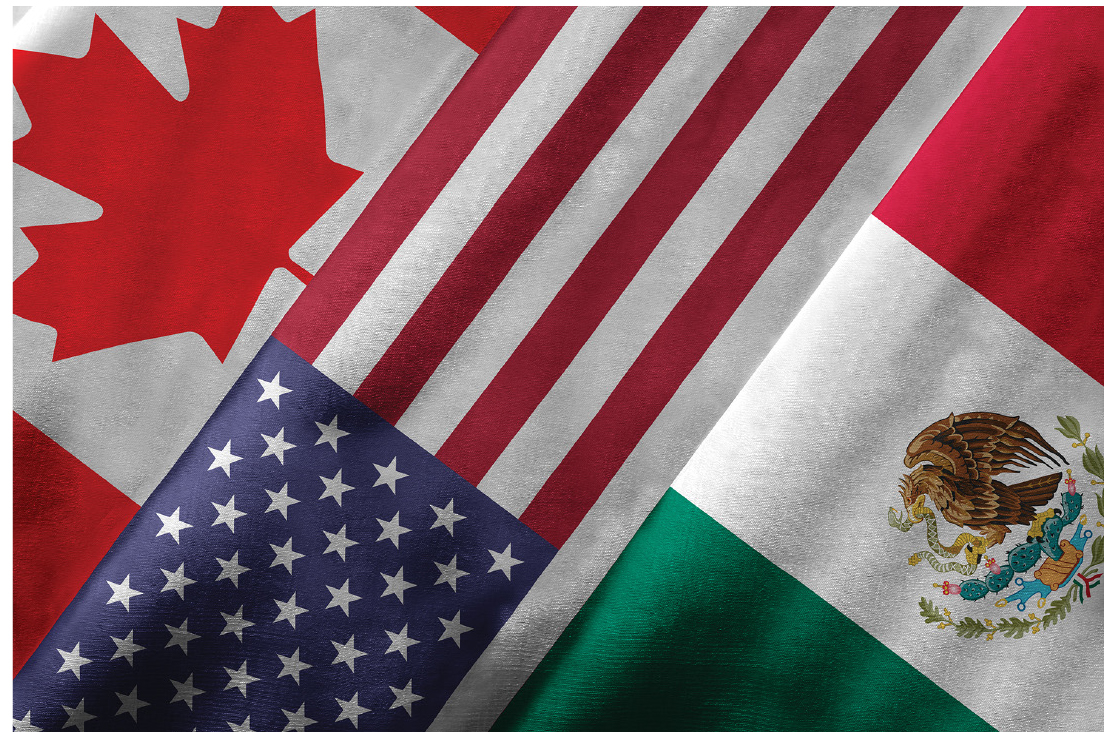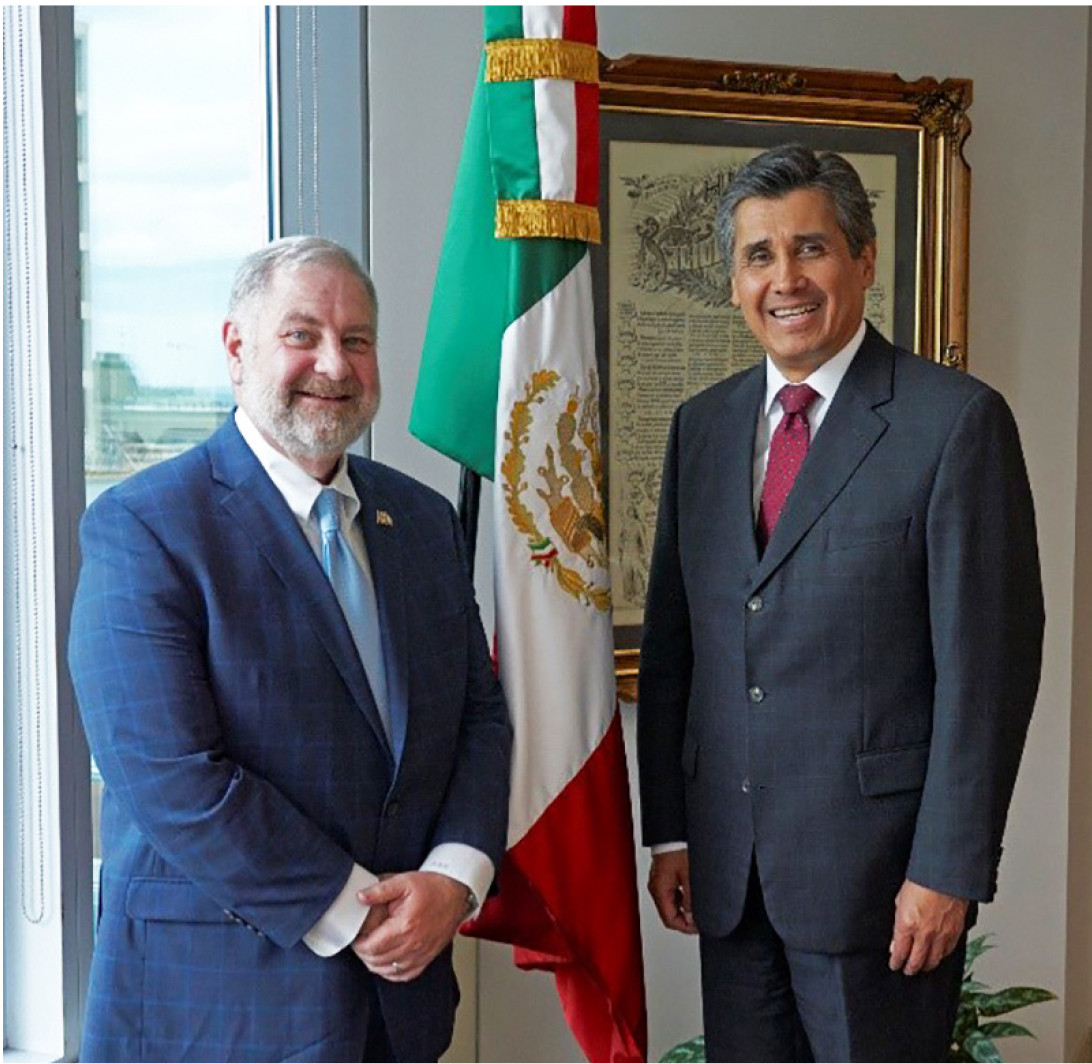By Mike Kastner, NTEA Managing Director
Meet our experts
This article was published in the March 2020 edition of NTEA News.
It’s called USMCA (United States-Mexico-Canada Agreement) in the U.S., CUSMA in Canada (or ACEUM in French) and T-MEC in Mexico, but many just refer to it as the New NAFTA. In any event, it replaces, modernizes and strengthens NAFTA, which was originally implemented in 1994.

The historic new free-trade agreement between Mexico, Canada and the U.S. was originally signed in November 2018. After agreement by each country’s leaders, however, legislatures of each nation needed to vote in favor of ratification.
Mexico was the first to ratify in June 2019. The U.S. Congress ratified it in bipartisan fashion (385–41 in the House and 89–10 in the Senate). President Trump signed the measure in January 2020.
At press time, Canadian Deputy Prime Minster Chrystia Freeland has introduced legislation to ratify the agreement. On Jan. 30, the House of Commons voted 290–28 in favor of the first step in the ratification process. The legislation will be debated and examined in both the House of Commons and Senate before it can receive Royal Assent. Ratification in Canada is expected to wrap up in April, after which the countries will work to meet the agreement’s requirements — so it may be several months before the deal actually enters into force.
On the ratifying legislation, Canadian Deputy PM Freeland noted that Canada, U.S. and Mexico account for nearly a third of the world’s gross domestic product — with only 7% of its population. “And, when it comes into force, this agreement will be the most progressive trade deal our country has ever negotiated. Indeed, I believe it will be the most progressive trade deal in the world,” according to Freeland.
On U.S. ratification, President Donald Trump said, “The USMCA is the largest, most significant, modern and balanced trade agreement in history. All of our countries will benefit greatly.”
USMCA ratification is an important step forward for all three countries and is good for the work truck industry. It brings much-needed certainty and stability to the business community and will facilitate trade and investment by modernizing outdated elements of NAFTA through a focus on new and emerging areas such as e-commerce and intellectual property. Additionally, USMCA’s regulatory harmonization elements are particularly useful for North America’s work truck industry, where differences in regulations can bring additional compliance costs to companies operating across borders.
NTEA has advocated for passage of a modernized NAFTA since negotiations began in 2017. Board of Directors members and Association staff have actively engaged politicians and decisionmakers in all three countries, including a bilateral meeting in June 2019 with Mexico’s Ambassador to Canada Juan José Gómez Camacho (see photo below) and meetings at the White House in May 2019.

Mike Kastner, NTEA managing director (left); and Ambassador to Canada Juan José Gómez Camacho (right).
Trilateral trade importance
As a result of NAFTA, since 1994, each country has seen its economies grow and standards of living increase. In 2017, total trilateral trade reached over US$1 trillion. The trade between Canada and U.S. alone has more than doubled since NAFTA’s inception, and trade between Canada and Mexico has grown over nine-fold. Exports from U.S. to Mexico increased almost 500% under NAFTA.
What’s new?
Compared to NAFTA, USMCA increases environmental and labor regulations while incentivizing car and truck production. Updated intellectual property protections are included in the new agreement as are reductions in red tape.
USMCA also formally recognizes the role of small and medium-sized businesses as vital to the North American economy with specific provisions. Mexico and Canada are the top two export destinations for U.S. small business goods. In 2016, 82,000 U.S. small and medium-sized businesses exported $51.2 billion in goods to Canada, and 53,000 U.S. small and medium-sized businesses exported $76.2 billion in goods to Mexico.
Motor vehicles
With regard to the motor vehicle industry, USMCA changes the country of origin rules. Under NAFTA, 62.5% of automobile components had to be manufactured in Mexico, U.S. or Canada in order to qualify as tariff-free. Under USMCA, the country of origin requirement increases to 75%. In addition, the deal requires that 40–45% of auto content be made by workers earning at least $16 per hour. Also, at least 70% of a producer’s steel and aluminum purchases must originate in North America.
The new rules of origin are intended to strengthen the three countries’ manufacturing abilities and increase the automotive workforce while providing incentives to source goods and materials within North America. This is an important step to help solidify North America as a unified bloc vis-à-vis global competitors.
Cross-border red tape
USMCA will reduce costs and provide greater predictability to cross-border transactions. It creates an informal shipment level of $2,500 which reduces paperwork for express shipments under that level. It also raises the de minimis level for Canadian express shipments exempt from duties and taxes from C$20 to C$40 and up to C$150 from duties. It sets the Mexico de minimis level up to US$50 exempt from duties and taxes, and raises it to US$117 duty-free for express shipments.
IP protection
USMCA contains new protections for intellectual property (IP), ensuring strong, effective protection and enforcement. It has the highest standards of protection for trade secrets of any prior free trade agreement in the U.S.
Specifically, USMCA includes a section on “intellectual property issues particularly relevant to small and medium-sized enterprises.” The section makes it easier to obtain protection of IP rights and reduces the transaction costs that are often a barrier to market entry for small and medium-sized businesses.
Sunset
Unlike NAFTA, USMCA includes a sunset clause — it’s written to expire in 16 years. After six years, the three countries will meet to negotiate and fix any problems with the agreement that may have occurred. The possibility of an extension will be discussed at that time. USMCA also allows for any of the three countries to withdraw with six months’ notice.
Learn more at ntea.com/advocacy.
